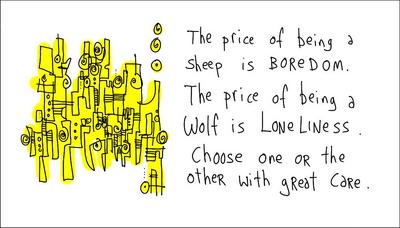The Ripple Effect of Creating Wealth in Business: Benefits for Communities, Employees, and Business Owners
In my book Driving Explosive Growth, I share how business wealth growth benefits more than the owners and investors if executed strategically. Helping business owners, CEOs and investors grow companies has become like a ministry for me. As businesses create wealth, it benefits other local businesses, employees, and communities. In the landscape of entrepreneurship, the pursuit of wealth creation within businesses is often viewed through a singular lens – profitability. However, the impacts of a thriving business extend far beyond financial gains for owners. Creating wealth within a business ecosystem generates a ripple effect that positively influences communities, employees, and business owners.
How Does Business Wealth Creation Strengthen Communities?
1. Job Creation: Successful businesses stimulate job growth, providing employment opportunities within local communities. By hiring locally, companies reduce unemployment rates and foster economic stability.
2. Economic Development: As businesses prosper, they generate revenue circulating within the community. This economic infusion fuels growth in various sectors, from local manufacturing support vendors to retail, hospitality, real estate, and infrastructure, enhancing overall quality of life.
3. Philanthropic Initiatives: Wealthy businesses often engage in corporate social responsibility (CSR) initiatives, such as funding education programs, supporting healthcare facilities, or contributing to environmental conservation efforts. These endeavors uplift communities and address societal needs, creating a more sustainable and equitable environment.
How Does Business Wealth Creation Empower Employees?
1. Career Advancement: A prosperous business provides employees with career growth and skill development opportunities. Employees can enhance their professional capabilities through training programs, mentorship, and internal promotions, leading to higher job satisfaction and increased loyalty. Increased loyalty improves engagement and employee retention.
2. Financial Stability: Competitive salaries, bonuses, and benefits packages offered by thriving businesses contribute to employees’ financial well-being. Employee’s income enables individuals to support their families, invest in education, and plan for long-term financial security. As businesses thrive and their employees’ income grows, we see many employees in education and community services.
3. Workplace Culture: Wealthy businesses often prioritize fostering a positive workplace culture of transparency, inclusivity, and employee empowerment. A supportive work environment enhances employee morale, productivity, and overall job satisfaction. As Scaling Up coaches, we start with exercises to clarify company culture and purpose and their big Harry audacious goal.
How Does Wealth Creation Enrich Business Owners, Their Families and Shareholders?
1. Innovation and Expansion: Financial success enables business owners to reinvest profits into research and development, innovation, and market expansion. By continually evolving and adapting to changing market dynamics, businesses can sustain growth and competitiveness over the long term.
2. Wealth Accumulation: Profitable businesses generate wealth for their owners, families, and shareholders through dividends, capital gains, and asset appreciation. Accumulated wealth provides owners financial security, allowing them to pursue personal aspirations, invest in other ventures, or retire comfortably. We often help business owners by introducing them to strategic wealth advisors who help design the ideal retirement plans for the owners and their teams.
3. Social Influence: Wealthy business owners often wield significant social influence within their communities. They can leverage their resources and expertise to drive positive change and contribute to the greater good through philanthropy, mentorship, and civic engagement.
4. Wealth Accumulation and Wealth Transfer Events: Unfortunately, we will not live forever. For many of the business owners I work with the sales of their business is the event that will fund their retirement and often transfer wealth to other family members. If planed correctly with a strategic wealth advisor for the ideal retirement plan design, the right business acceleration coach driving greater multiples at the time of sale and a business sale advisor helping find strategic buyers, this wealth transfer event will be life changing. Businesses who fail to plan, plan to fail.
We also must consider the lifestyle of the owner after the sale. Let’s say you have a lifestyle business where you have taken a salary and distributions as well as several write offs for vehicles, dinners, vacations and so on. After the sale all those write offs go away.
Example: Let’s say as CEO of your company you receive $1 million of value from your business today in compensations and expenses and you sell your business and receive say $10 million cash. Great right? Not so fast! You give the $10 million to your strategic wealth advisor and you draw up to 5% each year. Your new annual income is $500,000 or half of your lifestyle income prior to sale. (we will unpack the value gap in more detail in future posts) If however, you have worked with a wealth advisor over the years you probably have a 401k, SEP, IRA and they have coached you for the day of exit and you will still be able to draw $1million of income.
The last thing I coach business owners for is “what’s next” for your life and future focus. I have seen so many business owners not have a plan post sale, and I would argue your plan and how you plan to serve others post sale is even more important than the income targets. (I will spend more time on this in future posts as well)
If you are a business owner, I have a few questions for you to consider….
What is your plan for your business when you exit?
Have you strategically increased the value of your business over the past 3-5 years?
Do you plan to have a legacy business for your family?
Do you plan to sell the business?
What is the value of your business now?
Have you received tax advice on how to be paid for your business?
What is your plan post sales to close income gap your business provided?
What is your “what’s next”plan?
In conclusion, creating wealth within businesses transcends mere financial gain, profoundly impacting communities, employees, investors, and business owners alike. By fostering economic growth, empowering individuals, and driving social progress, prosperous businesses are pivotal in building vibrant and resilient societies. As entrepreneurs and business leaders strive for success, it is imperative to recognize the broader implications of wealth creation and embrace a holistic approach that benefits all stakeholders involved.
Let’s schedule a call if your business wants to create wealth.














